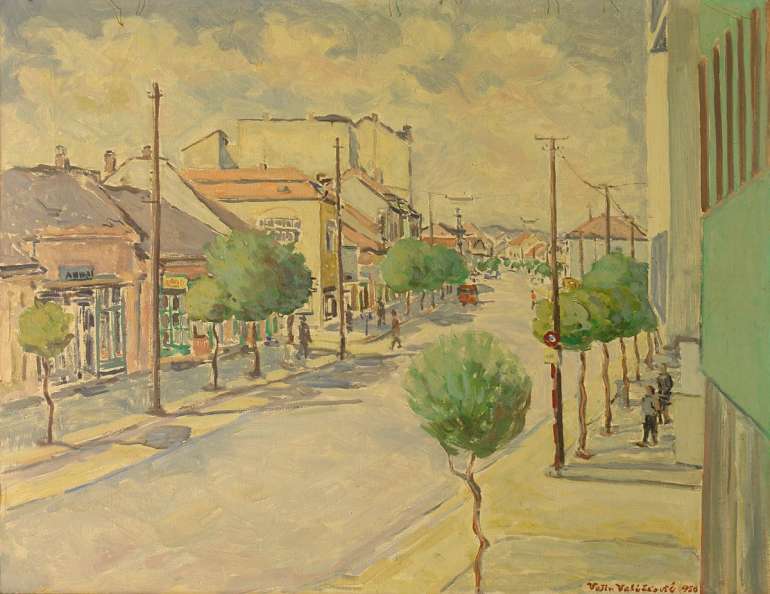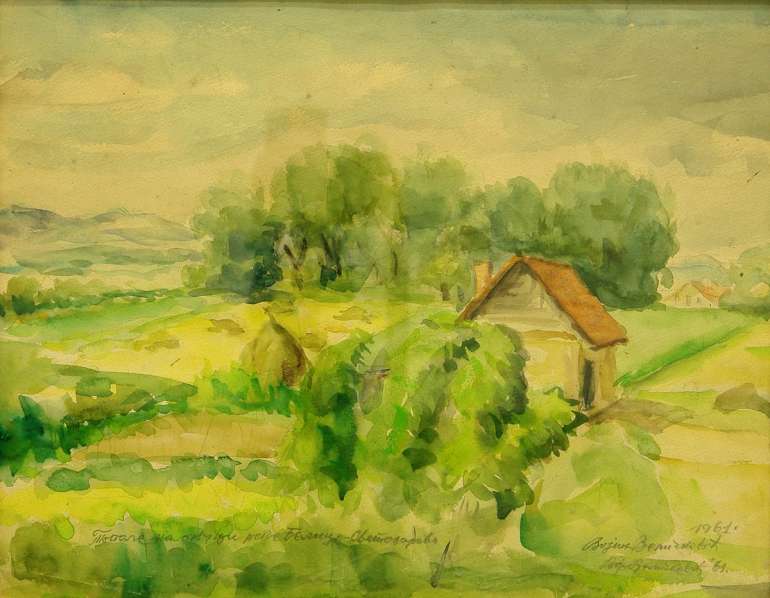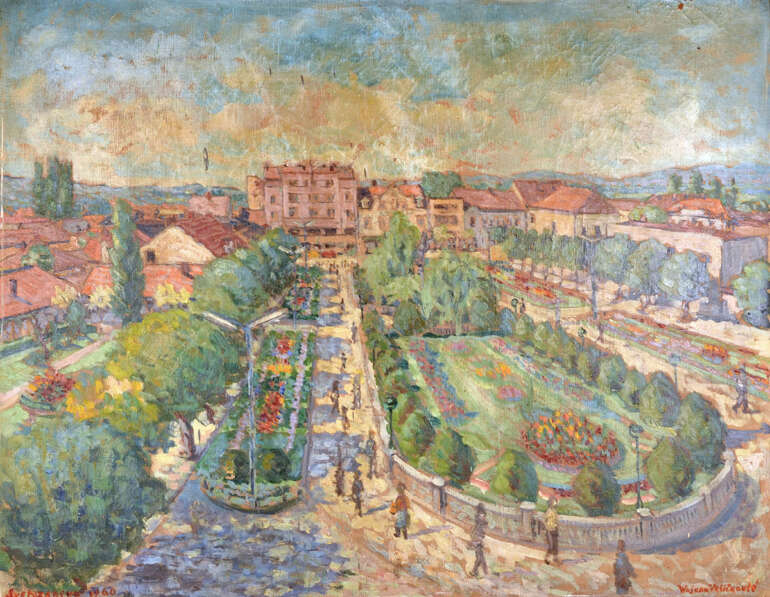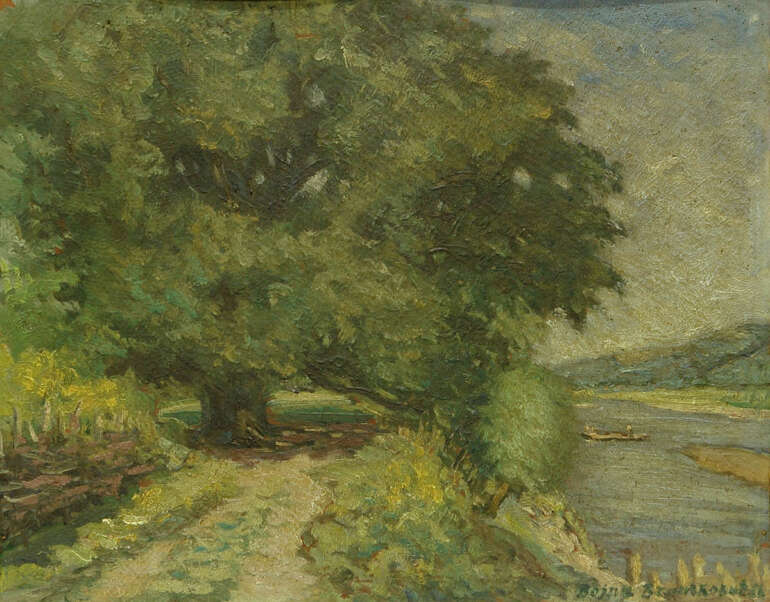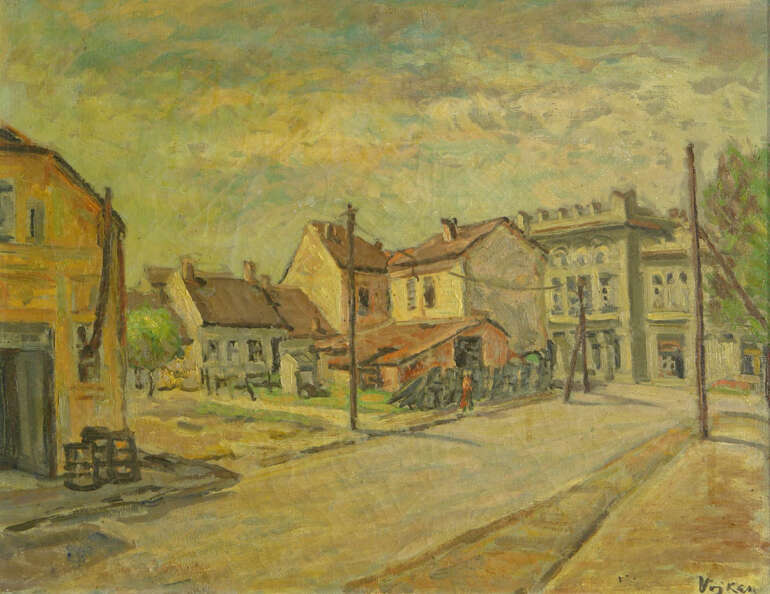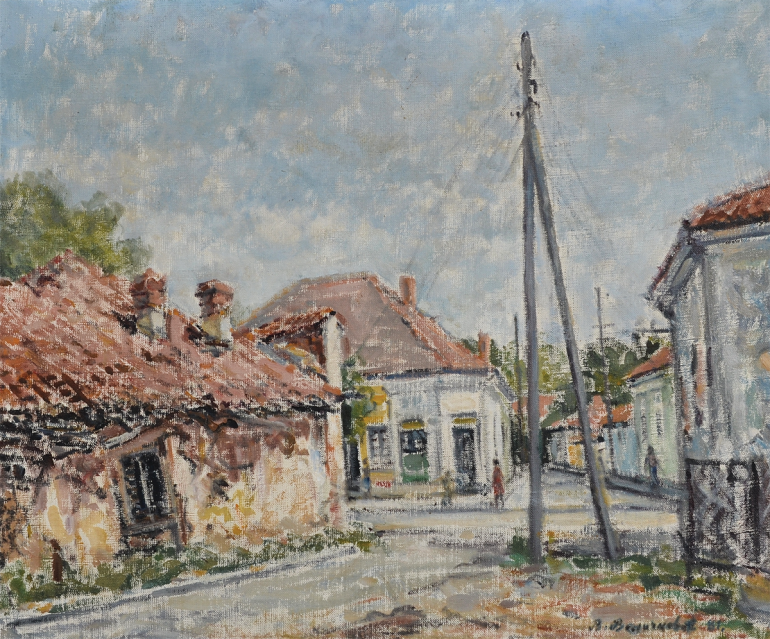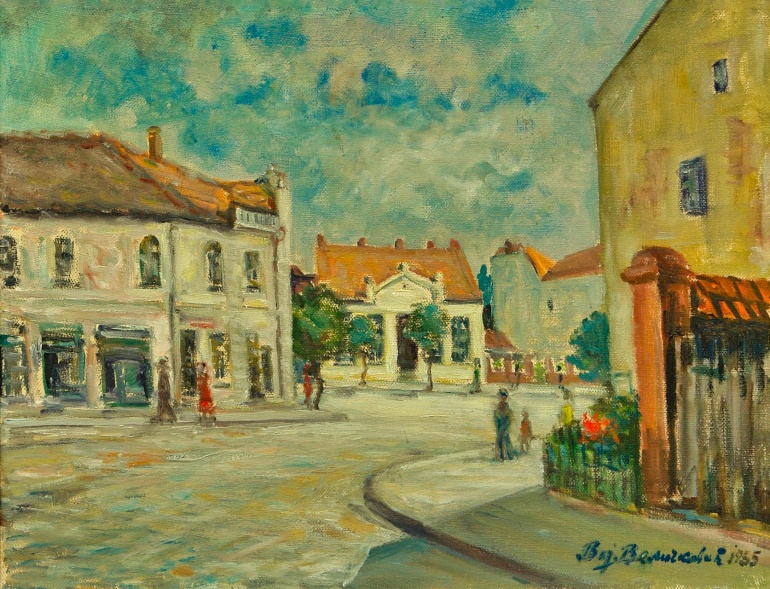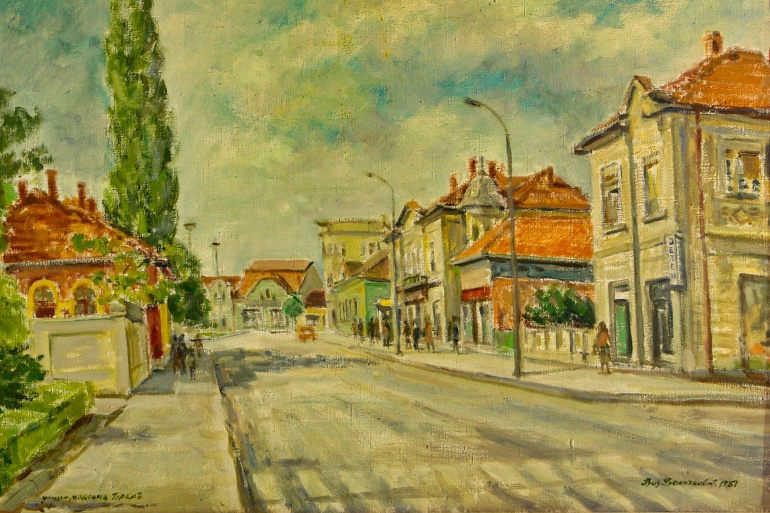Virtual Gallery of the Regional Museum Jagodina
Author of the exhibition: Jasmina Trajkov
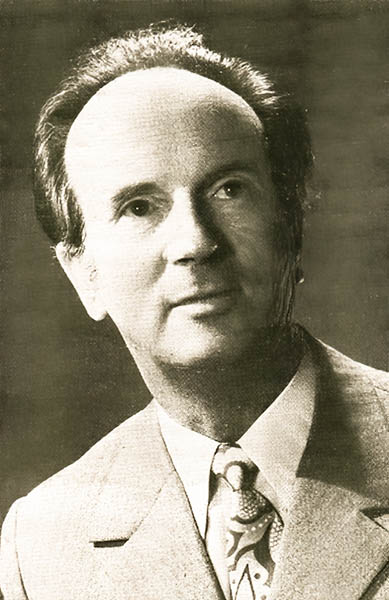
Vojin Veličković Vojkan was born in Belgrade in 1914. He moved with his family to Paraćin, his mother’s birthplace. After graduating from high school, he enrolled in the teaching department of the Art School in Belgrade in 1932, and in September 1937 he enrolled in the Academic Department of the Art School where his lecturers were artists such as Ivan Radović, Beta Vukanović, Ljubo Popović, Nikola Bešević, Petar Palavičini. ..After finishing school, he was appointed a teacher of skills, first in Kumanovo, then in Negotin, and then in 1941 he became a lecturer at the Real Gymnasium in Jagodina, where, with short breaks, he will remain for the next five decades. He died in Jagodina in 2001.
Vojin Veličković Vojkan is one of the most important personalities in the cultural life of Jagodina in the second half of the 20th century. He distinguished himself as an art pedagogue, painter and initiator of art life in the city. As a lecturer at the Gymnasium, he was highly esteemed, and his activity within the Cultural and Artistic Association “Milan Mijalković” is considered the beginning of artistic life in the city after the Second World War. This society was founded in March 1945. There were several sections, and by organizing events in the villages and in the city itself, they worked on the development of cultural life. Around 1947, on the initiative of Vojin Veličković, the Technical Department of the High School Folk Youth (T.O.S.N.O.) was founded within the Association “Milan Mijalković”. The main activity of the association T.O.S.N.O. was in the field of visual culture (writing slogans, making posters, banners, scenography, etc.). In March 1949, this association grew into an art section. Gifted students of the Gymnasium in Jagodina were gathered in it, as well as a large number of craftsmen, officials and workers. The section stopped working in 1954 because it did not have adequate conditions for maintaining its activities. It continued to exist only as a school section within the Gymnasium.
A new initiative for gathering artists has been launched after an exhibition of works by six painters from Jagodina, which was organized on the occasion of the November holidays in 1959. One of the participants in the exhibition and the main initiator of this idea was Vojkan Veličković. The City Association of Fine Artists has intensified its activities since 1963. Its first president was Vojkan Veličković, who at that time was the only educated artist in the association.
Vojin Veličković organized his first solo exhibition in Paraćin in 1939, but until 1953 he no longer exhibited independently, but only within the city section or within other collective exhibitions. Since 1953, his solo exhibitions have been held in Paraćin, Jagodina and Belgrade, which, as a rule, have been extremely well attended and received positive reviews. In 1965, Veličković became a member of the Association of Fine Artists of Serbia (ULUS).
Vojkan Veličković painted a large number of works. He worked mostly on landscapes and portraits. He fell in love with the landscape during his studies, when his professor, and our famous artist Ljuba Ivanović, gave him a map of his drawings with motifs from Macedonia. Vojkan began to paint the streets of Palilula, and after arriving in Svetozarevo (the name of Jagodina from 1946 to 1992), he began to make landscapes of the old parts of the city. Fellow citizens often had the opportunity to see him standing by his easel during the summer, making paintings on the street, directly experiencing and transferring to the canvas a picture of the old city that is disappearing and receding before the sudden development of the new Svetozarevо.
The art critics of that time emphasized the artistic values of his watercolors, especially the expressiveness of his drawings, while in oil paintings he was criticized for the color that is pale and almost gray, as well as for the uneven quality of the paintings. At the time when the old houses and buildings disappeared, and the streets of the city significantly changed their appearance, Vojkan became a chronicler of old Jagodina, which he immortalized on his canvases.
The collection of the Regional Museum of Jagodina preserves 31 oils and watercolors by this artist, and this virtual exhibition presents those of his works on which old Jagodina is painted as a motif.



